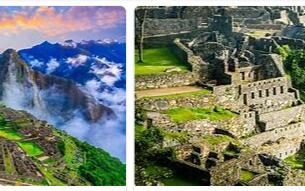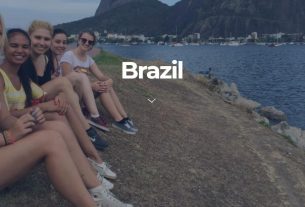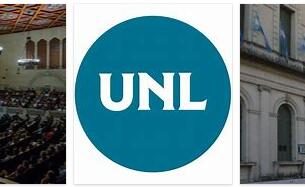Venezuela – with the world’s highest waterfall
Venezuela is currently in an extremely difficult political and economic crisis, which is why over two million people have left the country so far.
Venezuela – one is not entirely sure, the name now comes from Amerigo Vespucci, who was reminded of Venice by the stilt houses on the Guajira Peninsula and who gave the region the name Little Venice. Or was it more like the Conquistador Martín Fernández de Enciso noted in his Summa de geografía at the same time, namely that the population of the green country lived on a flat rock and was called Veneciuela. Be that as it may, the Bolivarian Republic of Venezuela is (alongside Colombia and Ecuador) one of the three countries that emerged from the collapse of Greater Colombia (Gran Colombia) in 1830.
Today’s state is by no means just home to the world’s tallest waterfall and the second longest South American river. Venezuela can also proudly refer to the longest coastline along the Caribbean Sea, at least fifth on the list of the world’s largest oil exporters, as well as a huge untouched reservoir of natural gas. In addition, the country has a reputation for producing the most beautiful women in the known world. More Miss World and Miss Universe titles come from Venezuela than from any other nation.
The cultural heart of the country is the fascinating, lively, but unfortunately not always very joyful capital of Caracas, located about 920 m high, a cauldron framed by the Ávila mountain range with seething temperament and morbid charm. The city attracts with a myriad of magnificent buildings such as the Pantheon or the city theater, but above all with its countless museums such as the Colección Cisneros, the Colección Fundación Polar, the Museo Alejandro Otero, the Museo de Arte Colonial Quinta de Anauco or the Museo de Arte Contemporáneo de Caracas Sofia Imber.
Whoever enters Venezuela is dealing with a country that is about three times the size of Germany and 40% covered by forest areas. The country’s coastline is over 2,800 kilometers long and can be used to reach both the Caribbean Sea and the Atlantic Ocean. Colombia, Guyana and Brazil are Venezuela’s neighbors and, in a broader sense, the Caribbean island states of Aruba, the Dutch Artillas and also Trinidad and Tobago. Venezuela is a land of contrasts in landscape. While the snow-covered giants of the Cordillera de Mérida touch the clouds on one side, the hot desert landscapes with their deadly climate dominate the Isthmus of Coro. And while islands and coral reefs stretch out like carpets off the vast Venezuelan coast as far as the eye can see,
There are four regions in the country: Venezuela is characterized on the one hand by the Andes, which are up to 5,000 meters high (highest mountain: Pico Bolívar at 4,981 m), this gigantic mountain range that arches through the country and is so sublime how beautiful is. Inland, the Llanos del Orinoco dominate, extensive plains that are crossed by the second longest river in South America. In addition to grasslands, these plains also include wide swamp areas, which are the lifeblood of a fantastic animal world.
The Maracaibo lowlands in northwest Venezuela bear the name of the gigantic Maracaibo Lake, a colossus of 13,000 km² and a depth of up to 50 meters. Finally there is the highlands of Guiana in the southeast of the country, one of the oldest landscapes in South America. Its most interesting phenomenon is the Gran Sabana with its so-called Tepuis (= table mountains), from which the highest waterfalls on earth plunge down into the depths. The Salto Ángel (Kerekupai-Merú or Angel Falls), the highest free-falling waterfall in the world with a drop of 978 m, also pours here. It is also the most famous tourist magnet in the Canaima National Park.
Hugo Rafael Chávez Frías (born 1954) was President of the country from February 2, 1999 until his death on March 5, 2013. He is one of the left-wing socialist nationalists and had reshaped the country considerably since he took office and also repeatedly quarreled with the USA. He won his first election on December 6, 1998 with 56% of the vote and the second on July 30, 2000 with 60%. On August 15, 2004, there was a referendum on his impeachment. Around 40.7% voted in favor and around 59.35 against – with a participation of around 70%. In the third election in 2006 he was elected president for the third time with around 62.8%. The last referendum took place on February 15, 2009. In the course of this referendum, around 54% of voters voted to amend the constitution in such a way that
His successor was Elías Jaua Nicolás Maduro. He had won the presidential election on April 14, 2013, according to the election commission, which was dominated by the socialists, with 50.66% of the vote against his challenger Henrique Capriles – who had received 49.06% of the vote.
| Name of the country | Bolivarian Republic of VenezuelaRepública Bolivariana de Venezuela |
| Form of government | Republic with a multi-party system |
| Geographical location | Between 0 ° 45 ‘and 12 ° 10’ north latitude and 59 ° 45 ‘and 73 ° 10’ west longitude |
| National anthem | “Gloria al bravo pueblo” |
| National holiday | July 5th (1811 year of the declaration of independence) |
| Population | Approx. 29 million residents (Credit: Countryaah: Venezuela Population) |
| Ethnicities | Mestizo 67%Europeans 21%
Africans 10% Indians 2% |
| Religions | Va Roman Catholic Christianity (92.7%) |
| Languages | Spanish (official language) and indigenous languages |
| Capital | Caracas |
| Surface | 916,445 km² |
| Highest mountain | Pico Bolivar with a height of 5,002 m |
| Longest river | Orinocco with a length of 2574 km |
| Largest lake | Lake Maracaibo with an area of around 16,316 km² |
| International license plate | YV |
| National currency | 1 bolívar = 100 céntimos (VEB, Bs) |
| Time difference to CET | – 5.5 h |
| International phone code | +58 |
| Voltage frequency | 120 volts and 60 hertz |
| Internet TLD (Top Lever Domain) | .ve |
Venezuela: history
Prehistoric times
The first traces of settlement can be traced back to the second millennium BC. Before the arrival of the Spaniards, Aruak, Chibcha and Karibindians were settled in the country as hunters and gatherers.
1498 to 1811 – Under the Spanish Crown
According to Abbreviationfinder website, in 1498 Christopher Columbus (1454-1506) sighted the Orinocco delta. A year later, Amerigo Vespucci (1466-1515) explored the coast of the country with Alonso de Ojeda (1470-1516). The pile dwellings of some Indian tribes inspired him to designate the country as Venezuela (Little Venice). The islands of Cubagua, Margarita and Coche were used as a center for pearl diving. Most of the natives who were forced to work were killed. In 1529 the Welser family from Augsburg took over the banking housethe administration. Their rule ended in 1546 because they failed to fulfill their contractual obligations with the King of Spain to colonize the area. The Spanish founded the cities of Maracaibo (1546), Valencia (1553), Merída (1558) and Caracas (1567). In 1577 Caracas became the seat of governor. Venezuela remained an insignificant colony of Spain in the New World. It was under the jurisdiction of Santo Domingo. After most of the native labor perished, slaves were imported from Africa to harvest cotton, coffee, cocoa and sugar cane.
1811 to 1908 – War of Independence and the formation of the state
Under the leadership of Simon de Bolívar (1783 – 1830) the Venezuelans fought against Spanish rule for ten years. In the Battle of Carabobo (1821) they achieved the victory that enabled them to break away from the motherland. Simon Bolívar’s troops had helped the Colombians defeat the Spanish in 1819. Now they together founded the Republic of Greater Colombia, to which Ecuador and Panama also belonged. In 1830, after Bolívar’s death, this federation disintegrated and Venezuela became independent. Civil wars resulted from the conflict between regional rulers and the centralists in Caracas. The First Constitution for the United States of Venezuelacame into force in 1864 and weakened the central government. In 1870, under the government of Antonio Guzmán Blanco, the country returned to a strong central government. Guzmán introduced compulsory schooling and enforced freedom of religious belief.
1908 to 1958 – dictatorship and revolution
The high point of caudillismo, the dictatorial leadership, was the rule of Juan Vicente Gomez. The opposition was brutally suppressed with police and military operations. Large oil reserves were exploited. The resulting profits remained in a few hands. Gomez died in 1935 and the country moved to democracy under the leadership of the Acción Democrática. In 1948 a military coup overthrew the elected President Rómulo Gallegos and in 1952 another caudillo took over power: Marcos Pérez Jimínez. The so-called “patriotic junta” made up of military and civilians overthrew him.
1958 until today
President Rómulo Gallegos, who had already been elected, won the subsequent presidential elections. In 1961 he had the constitution changed with the aim of giving the president a strong position. It was not until the elections in 1968 that the first constitutional change of a Venezuelan government came about. In 1975 the oil industry was nationalized and as the oil price rose, Venezuela became one of the richest countries in Latin America. The fall in oil prices in the 1980s put the state in a debt trap. The budget cuts demanded by the International Monetary Fund sparked two military coup attempts led by Hugo Chávezout. Hugo Chavez won the elections and the referendum on a new constitution in 1999 with an election program against neoliberal economic policy. During his tenure there was tension with Colombia over unclear support from Colombian terrorists and tension with Guyana over Venezuelan territorial claims.
Hugo Rafael Chávez Frías (born 1954) was the country’s president from February 2, 1999 until his death on March 5, 2013. He was one of the left-wing socialist nationalists and had transformed the country considerably since he took office.
He won his first election on December 6, 1998 with 56% of the vote and the second on July 30, 2000 with 60%. On August 15, 2004, there was a referendum on his impeachment. Around 40.7% voted in favor and around 59.35 against – with a participation of around 70%. In the third election in 2006 he was elected president for the third time with around 62.8%. The last referendum took place on February 15, 2009. In the course of this referendum, around 54% of the electorate voted in favor of changing the constitution so that he and other elected officials could be re-elected as often as they wanted – a majority had rejected this in 2007.
His successor was Elías Jaua Nicolás Maduro. He had won the presidential election on April 14, 2013, according to the election commission, which was dominated by the socialists, with 50.66% of the vote against his challenger Henrique Capriles – who had received 49.06% of the vote.



